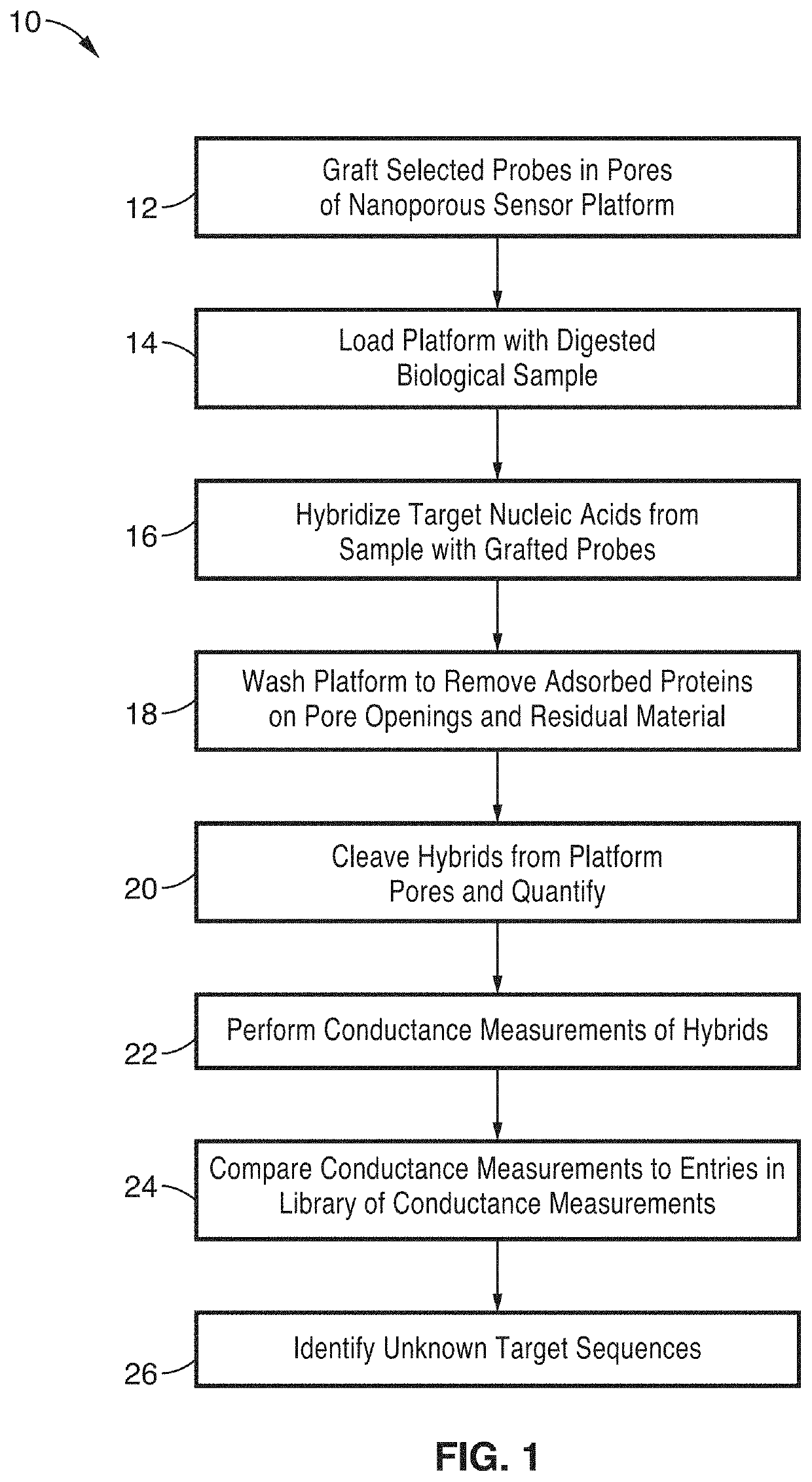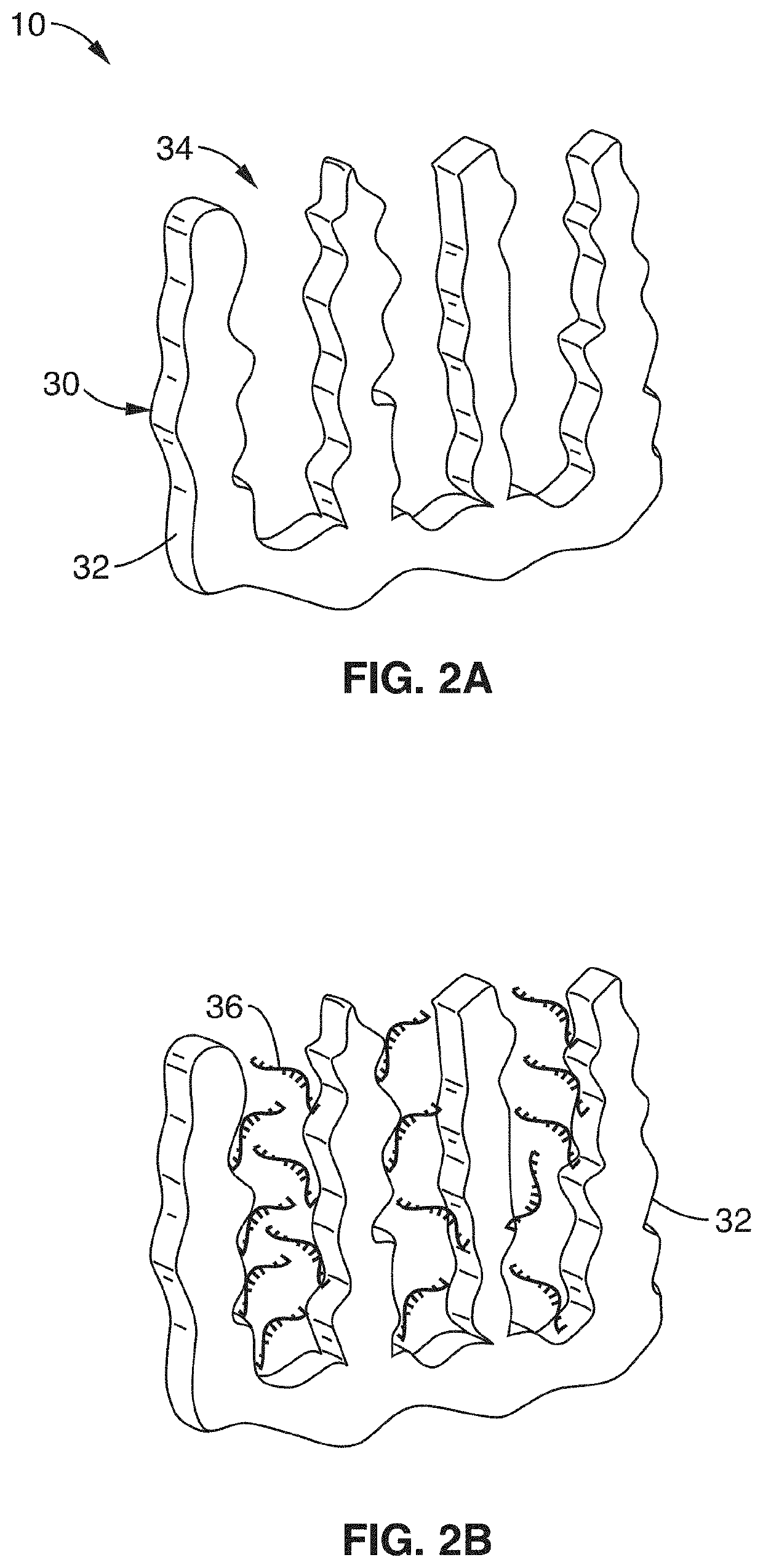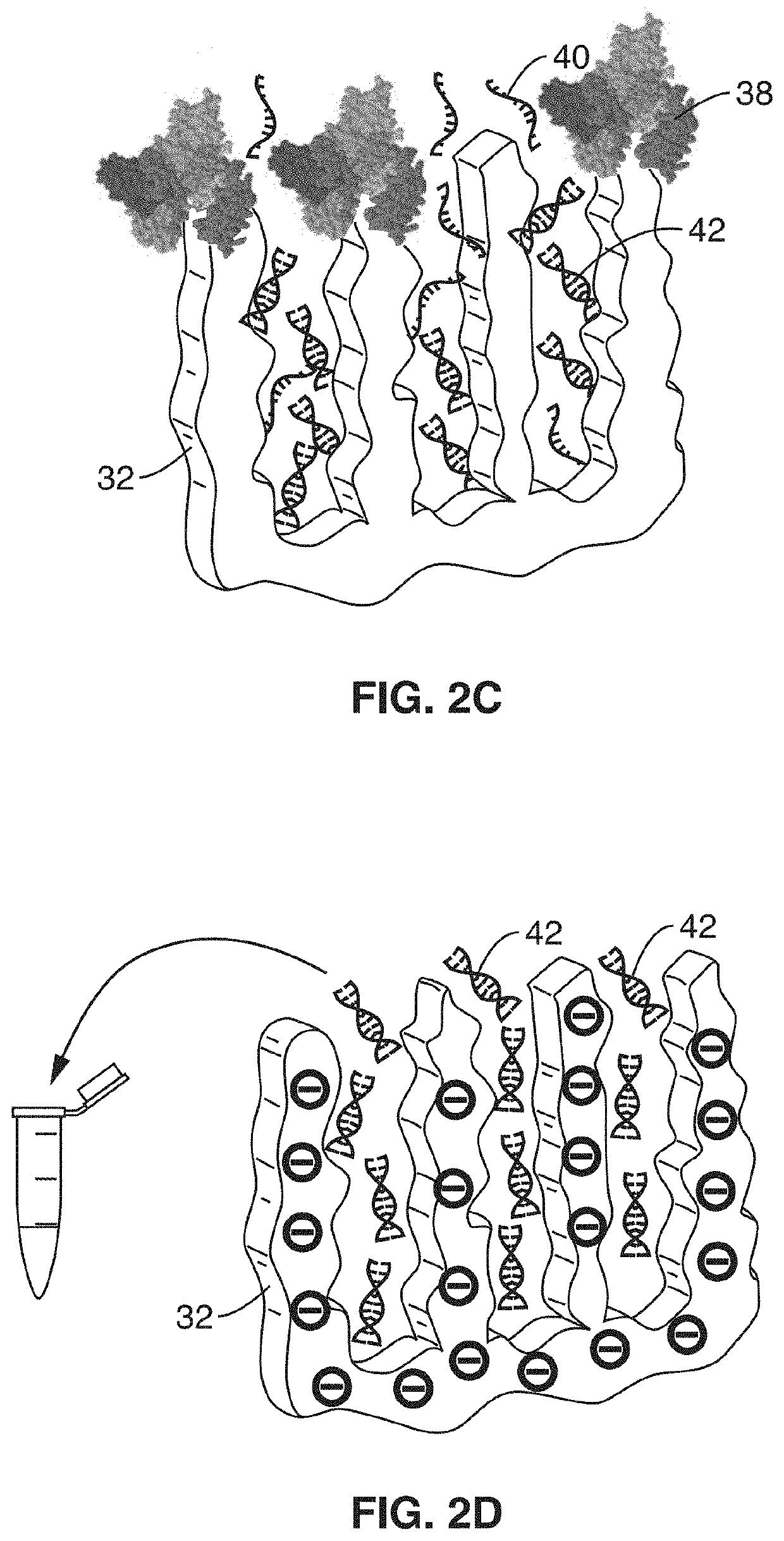Integrated electrochemical detection and purification of nucleic acid biomarkers
a nucleic acid biomarker and electrochemical detection technology, applied in the field of pathogen screening methods and sensors, can solve the problems of affecting the excessively long overall time to result, adverse effects on vital organs such as the liver, etc., to improve the ultimate sensitivity and specificity of the assay, improve the effect of signal-to-noise performance and low detection limits
- Summary
- Abstract
- Description
- Claims
- Application Information
AI Technical Summary
Benefits of technology
Problems solved by technology
Method used
Image
Examples
example 1
[0066]In order to demonstrate the operational principles of the apparatus and the capture and identification methods, a testing apparatus was fabricated with a structure and two-stage processing steps shown generally in FIG. 1 through FIG. 3.
[0067]For the first stage, electrodes of nanoporous gold (np-Au) were produced to enable both detection of specific target sequences in a complex biological sample and their subsequent purification. In this demonstration, the np-Au electrodes were modified with 26 mer DNA probes (via thiol-gold chemistry) that enabled sensitive detection and capture of complementary DNA targets in the presence of complex biological media (fetal bovine serum) and other interfering DNA fragments in the range 50 to 1500 base pairs. Upon target capture, the non-complementary DNA fragments and serum constituents of varying sizes were washed away with buffer. Finally, the surface-bound DNA-DNA hybrids were released by electrochemically cleaving the thiol-gold linkage ...
example 2
[0079]To further demonstrate the effectiveness of the apparatus and system in simple and complex environments, two-stage devices were prepared and evaluated under different conditions. For the electrochemical signal evaluations, prepared DNA functionalized nanoporous electrodes were incubated in 20 μM methylene blue (MB), a DNA hybridization indicator, prepared in 1× phosphate buffered saline (PBS) and placed inside a custom-built Teflon electrochemical cell. Square wave voltammetry (SWV) was used to investigate the reduction of MB which was the indicator of DNA immobilization.
[0080]For detection in complex environment evaluations, the target RNA was spiked in 10% fetal bovine serum (FBS) or digested RNA from E. Coli in one setting. The RNA sample was digested with RNase T1 enzyme after extracting it from the sliced E. Coli cell. The sample contained different lengths of RNA fragments along with the target RNA and other proteins. The probe modified np-Au was incubated with target so...
PUM
| Property | Measurement | Unit |
|---|---|---|
| concentrations | aaaaa | aaaaa |
| concentration | aaaaa | aaaaa |
| frequency | aaaaa | aaaaa |
Abstract
Description
Claims
Application Information
 Login to View More
Login to View More - R&D
- Intellectual Property
- Life Sciences
- Materials
- Tech Scout
- Unparalleled Data Quality
- Higher Quality Content
- 60% Fewer Hallucinations
Browse by: Latest US Patents, China's latest patents, Technical Efficacy Thesaurus, Application Domain, Technology Topic, Popular Technical Reports.
© 2025 PatSnap. All rights reserved.Legal|Privacy policy|Modern Slavery Act Transparency Statement|Sitemap|About US| Contact US: help@patsnap.com



